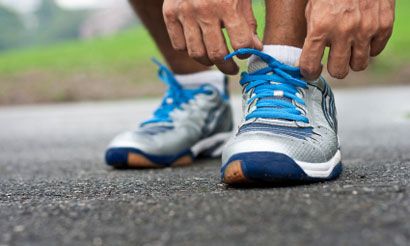ADT May Impact Physical Function, Highlighting Need for Exercise
Shabbir M.H. Alibhai, MD, et al from the University Health Network in Toronto, Canada, found that impact from ADT on physical function persisted over 36 months, indicating ADT has lasting effects, which need to be addressed.
Shabbir M.H. Alibhai, MD, et al from the University Health Network in Toronto, Canada, found that impact from ADT on physical function persisted over 36 months, indicating ADT has lasting effects, which need to be addressed.

Building on an earlier 12-month study, Shabbir M.H. Alibhai, MD, et al from the University Health Network in Toronto, Canada, found that impact from androgen deprivation therapy (ADT) on physical function persisted over 36 months,2indicating ADT has lasting effects, which need to be addressed.
“Most men [with prostate cancer] starting ADT remain on it for at least 2 to 3 years, so it is important to determine whether the observed 12-month declines in physical function with ADT persist, worsen, or resolve over time,” the researchers wrote.
The Alibhai et al study2included 87 men with nonmetastatic prostate cancer who were starting continuous ADT, 86 men with prostate cancer who did not receive ADT, and 86 healthy men, with the latter two groups serving as controls. All three groups were recruited from two tertiary care academic cancer centers in Toronto, Canada, between May 2004 and September 2007, and were frequency-matched by age, education, and walking independence at baseline.
Throughout the study, participants’ physical function was assessed using the 6-minute walk test (6MWT), grip strength on a Jamar dynamometer, and the Timed Up and Go (TUG) test, and quality of life (QoL) was measured using the Medical Outcomes Study 36-Item Short Form Health Survey (SF-36). All physical function and QoL measures were assessed at baseline and at 3, 6, 12, 18, 24, 30, and 36 months.
Using mixed effects regression models from baseline to 36 months, Alibhai et al found statistically significant differences between the ADT group and controls for all 3 measures of physical function. ADT users performed more poorly than both controls on the 6MWT, with controls showing initial improvements in this measure over the first 6 months of the study followed by stabilization (P= .003; all reported comparisons are with healthy controls). At 3 months, grip strength declined in ADT users and then stabilized over time, whereas both controls did not exhibit significant declines in grip strength over time (P= .004). Finally, ADT users demonstrated gradual worsening of their TUG scores, whereas these scores remained stable or improved slightly in both control groups (P<.001).
With regard to QoL, all 3 cohorts had similar baseline scores on the physical component summary of the SF-36 (analysis of variance [ANOVA],P>.20), but they declined in ADT users and remained stable for both control groups (P<.001). Scores on the mental component summary of the SF-36 remained stable in all groups (P= .08, for ADT users vs controls). There was also no difference between groups in baseline scores in either the Barthel index or the Lawton-Brody index (ANOVA,P>.20), and these scores remained stable over time in all 3 cohorts.
Alibhai et al assessed whether or not age had an impact on the observed changes in physical function over time. They found that although baseline levels of physical performance were lower in older participants across all cohorts, the effects of ADT were not statistically different by age group for any of the objective physical performance measures or self-reported measures.
The authors’ study shows that ADT use is associated with persistent, clinically relevant declines in physical function that is independent of age. Although most declines stabilized, they did not improve beyond the first 6 months of use, and lower extremity function continued to worsen over time, as shown by patients’ TUG scores.
“[Our] results will help clinicians and patients to better understand the risks of ADT. Moreover, they reinforce the need for greater adoption of exercise programs among ADT users, regardless of whether they are new or established users, to reverse or prevent these declines,” the authors conclude.
References
- Alibhai SMH, Breunis H, Timilshina N, et al. Impact of androgen-deprivation therapy on physical function and quality of life in men with non-metastatic prostate cancer. J Clin Oncol. 2010;28:5038-5045.
- Alibhai SM, Breunis H, Timilshina N, et al. Long-term impact of androgen-deprivation therapy on physical function and quality of life. Cancer. http://www.ncbi.nlm.nih.gov/pubmed/25809861. Accessed April 2, 2015.